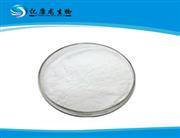One of the quinolones, which has a broad-spectrum antibacterial effect and strong antibacterial activity against most Enterobacteriaceae bacteria such as Escherichia coli, Klebsiella, Proteus, Salmonella, Shigella and Gram-negative bacteria such as Haemophilus influenzae, Legionella pneumophila, Neisseria gonorrhoeae have strong antibacterial activity. It also has antibacterial activity against Gram-positive bacteria such as Staphylococcus aureus, Streptococcus pneumoniae, Streptococcus pyogenes, Mycoplasma pneumoniae, and Chlamydia pneumoniae, but has a poor effect on anaerobic bacteria and Enterococcus.
production method
The left-handed body is directly separated from the racemic ofloxacin by a high-performance liquid chromatography column packed with a special stationary phase; or the ofloxacin is treated with hydroxylamine sulfate, acidified with hydrochloric acid to obtain a hydrochloride salt, which is alkaline. Ion exchange column treatment, the obtained amphoteric compound, added (S)-(+)-mandelic acid, which forms a crystal with the (-)-isomer to form a crystal, which can be obtained by ion exchange resin and then by deamination. . Or 2,3,4,5-tetrafluorobenzoic acid as raw material, first prepared 2-(ethoxymethylene)-3-oxo-3-(2,3,4,5-tetrafluorophenyl) After ethyl propionate, it is reacted with (S)-2-aminopropanol to introduce an asymmetric carbon atom, which is obtained by ring closure, hydrolysis, and introduction of methyl piperazine. It can also react 2,3,-difluoro-6-nitrophenol as raw material with glycidyl p-toluenesulfonate in the R configuration in the presence of a phase transfer catalyst to form an optically active compound, which is then reduced and ethoxylated. Ethylene methylene malonate (EMME) is condensed and finally treated with a reagent, closed-loop, hydrolyzed, and piperazinyl.
use
This product has the characteristics of broad spectrum of antibacterial activity and strong antibacterial effect. For most Enterobacteriaceae bacteria, such as Klebsiella pneumoniae, Proteus, Salmonella typhi, Shigella, Influenza, Part of Escherichia coli, P. aeruginosa Bacillus, Neisseria gonorrhoeae, etc. have strong antibacterial activity, and also have good antibacterial activity against some Staphylococcus, Streptococcus pneumoniae and Chlamydia.

 China
China







